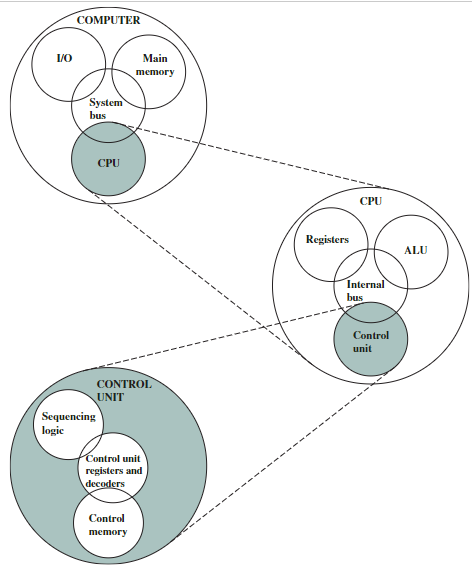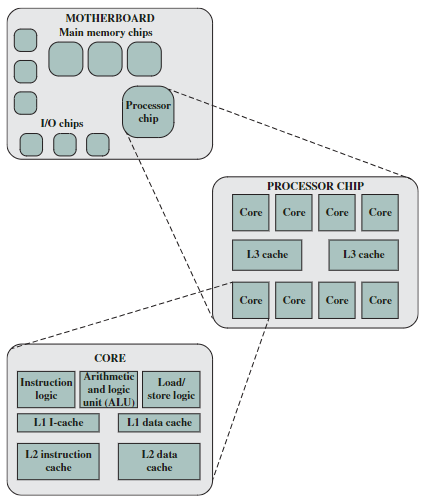Computer History and Basics
1/15
Earn XP
Description and Tags
Key terms relating to basics of computer systems and their history
Name | Mastery | Learn | Test | Matching | Spaced |
|---|
No study sessions yet.
16 Terms
Computer Architecture
The attributes of a system visible to a programmer and that have direct impact on logical execution of a program. E.g. available operations
Computer Organisation
The operational units and their interconnections that realize the architectural specifications. E.g. instruction set, number of bits for data types, I/O mechanisms
Instruction Set Architecture
Defines instruction formats, instruction opcodes, registers, memory allocation for data and instructons
CPU contents
ALU
Control unit
Registers
CPU interconnection - enables communication between other parts of CPU
What processors handle
Grahics, I/O, networks, calculations
First programmable computer
Konrad Zuse's Z-series 1938
Used punch film tape for input
5Hz clock
First electronic computer
Colossus 1943
Used 1500 valves, paper tape, 500 char/second
Not general purpose
First electronic general purpose computer
ENIAC 1947
Programmed with wires
Unreliable
Computer architecture vs organisation in practice
Many manufactures offer computer models with the same architecture but different organisations
One architecture can span many years with an organisation that develops over time - enables greater software continuity
Computer Functions
Data processing
Data storage
Data movement
Data control
Compute Structure Main Components
Central Processing Unit
Main Memory
Input/Output Devices
System interconnection
Single-processor Computer top-level structure

Multicore Computer structure

Printed circuit board (PCB)
Holds and interconnects chips and other components
Made of layers (usually 2-10) that interconnect via copper pathways
Core - definition and elements
An individual processing unit on a processor chip
Functional elements:
Instruction logic - fetch, decode, execute
ALU - performs operations
Load/store logic - manages transfer of data
Computer technology progression
Vacuum tubes 1940s-50s
Used vacuum tubes for digital logic elements
Transistors 1950s-60s
Smaller and cheaper than vacuum tubes
Solid-state device made of silicon
Integrated circuits late 1960s onwards
Many logic gates and memory cells arranged in a grid
I/O points